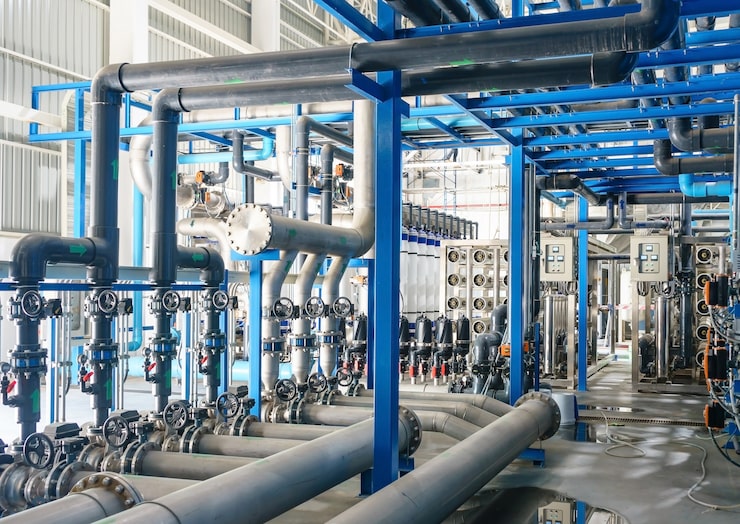Choosing the right pipe material for water lines is a critical decision that impacts the safety, durability, and overall performance of any plumbing or water distribution system. While many pipe types are suitable and widely used for water supply, there are specific materials and pipe types that experts do not recommend for water lines due to various health, safety, or technical concerns. Understanding what type of pipe is not recommended for a water line helps property owners, builders, and engineers avoid costly mistakes and ensures the delivery of clean and safe water.

In water supply systems, pipes must comply with strict standards for potable water safety. They need to be non-toxic, corrosion-resistant, durable under pressure and temperature variations, and free from materials that could leach harmful chemicals. Some pipes, despite their availability or low cost, fail to meet these essential criteria for carrying drinking water. This article explores pipe types that are generally not recommended for water lines and explains the reasons behind these recommendations.
Galvanized steel pipes
Galvanized steel pipes were once a common choice for water lines due to their strength and ability to withstand pressure. These pipes are coated with zinc to resist corrosion initially. However, over time, galvanized pipes tend to corrode internally, leading to rust buildup, reduced water flow, and possible contamination. The corrosion can cause lead or other heavy metals to leach into the water, posing health risks.
Because of these issues, galvanized steel pipes are not recommended for new water lines today. They are often found only in older plumbing systems where replacement is advised to improve water quality and reduce maintenance costs.
Polybutylene pipes
Polybutylene was a popular plastic pipe material in the 1970s and 1980s due to its low cost and ease of installation. However, it was later discovered that polybutylene pipes are prone to degradation when exposed to chlorine and oxidants commonly found in municipal water supplies. This degradation leads to brittleness, cracking, and frequent leaks.
Due to widespread failures and lawsuits, polybutylene pipes are no longer used or recommended for water lines. Homeowners with existing polybutylene plumbing are often encouraged to replace them to avoid costly water damage.
Unplasticized PVC pipes for hot water
Polyvinyl chloride or PVC pipes are widely used for cold water supply and drainage due to their affordability and chemical resistance. However, standard PVC pipes are not suitable for hot water applications because they can soften or deform when exposed to elevated temperatures. Using regular PVC for hot water lines can cause pipe failure and leaks.
For hot water lines, chlorinated PVC (CPVC) is preferred because it withstands higher temperatures. Therefore, using unplasticized PVC for hot water is generally not recommended.
Lead pipes
Lead pipes were historically used for water supply due to their malleability and durability. However, extensive research has shown that lead leaches into drinking water, posing severe health risks including neurological damage, especially in children.
Because of this, lead pipes are universally not recommended and have been banned in many countries for water supply systems. Any existing lead plumbing should be replaced promptly to safeguard health.
Thin-walled or low-grade plastic pipes
Some low-quality or thin-walled plastic pipes may be marketed as economical solutions for water lines. However, these pipes often lack the structural integrity to handle water pressure over time and may crack, warp, or leach unwanted chemicals into the water.
It is critical to choose pipes that meet recognized standards such as NSF/ANSI certifications to ensure they are safe for potable water. Using substandard plastic pipes is not recommended because of potential health hazards and premature failure.
Copper pipes with poor quality or improper installation
While copper is generally an excellent choice for water lines due to its durability and corrosion resistance, low-quality copper or improper installation techniques can cause problems such as pinhole leaks or corrosion in aggressive water conditions.
Though copper itself is not disqualified, pipes that do not meet quality standards or are installed without adherence to best practices should be avoided.
Cast iron pipes for potable water
Cast iron pipes have been used extensively in sewer and drainage systems because of their strength and longevity. However, cast iron is heavy and prone to internal corrosion and rust that can affect water quality.
Because of these issues, cast iron is not typically recommended for potable water lines. Modern alternatives such as ductile iron with protective linings or plastic pipes are preferred for water supply.
Non-certified pipes or recycled materials without testing
Using pipes made from recycled materials or non-certified sources without thorough testing for potable water safety poses significant risks. Unknown chemical additives or contaminants may leach into drinking water, compromising health.
Always selecting pipes certified for drinking water use by recognized agencies ensures safety and regulatory compliance.
Summary of risks associated with non-recommended pipes
Pipes that corrode internally contribute to water contamination and reduced flow. Those prone to brittleness or cracking cause leaks and water damage. Pipes unable to handle temperature variations fail prematurely. Materials that leach toxic substances such as lead or plasticizers jeopardize public health.
Additionally, non-certified or poor-quality pipes often result in higher maintenance costs and system downtime. Choosing unsuitable pipes undermines the reliability and safety of the entire water supply system.
Conclusion
Knowing what type of pipe is not recommended for a water line is crucial to ensure safe, reliable, and long-lasting plumbing systems. Pipes such as galvanized steel, polybutylene, lead, unplasticized PVC for hot water, low-quality plastics, and cast iron for potable water have well-documented drawbacks that make them unsuitable for modern water supply applications.
Investing in certified, corrosion-resistant, and properly installed pipes like PEX, CPVC, copper, or approved HDPE ensures that water remains clean and the plumbing system performs efficiently over time. Always consulting plumbing professionals and adhering to local codes and standards further guarantees the choice of the best pipe material for your water lines.
By avoiding pipes that are not recommended water line owners protect health, reduce repair costs, and promote sustainable water infrastructure for the future.


